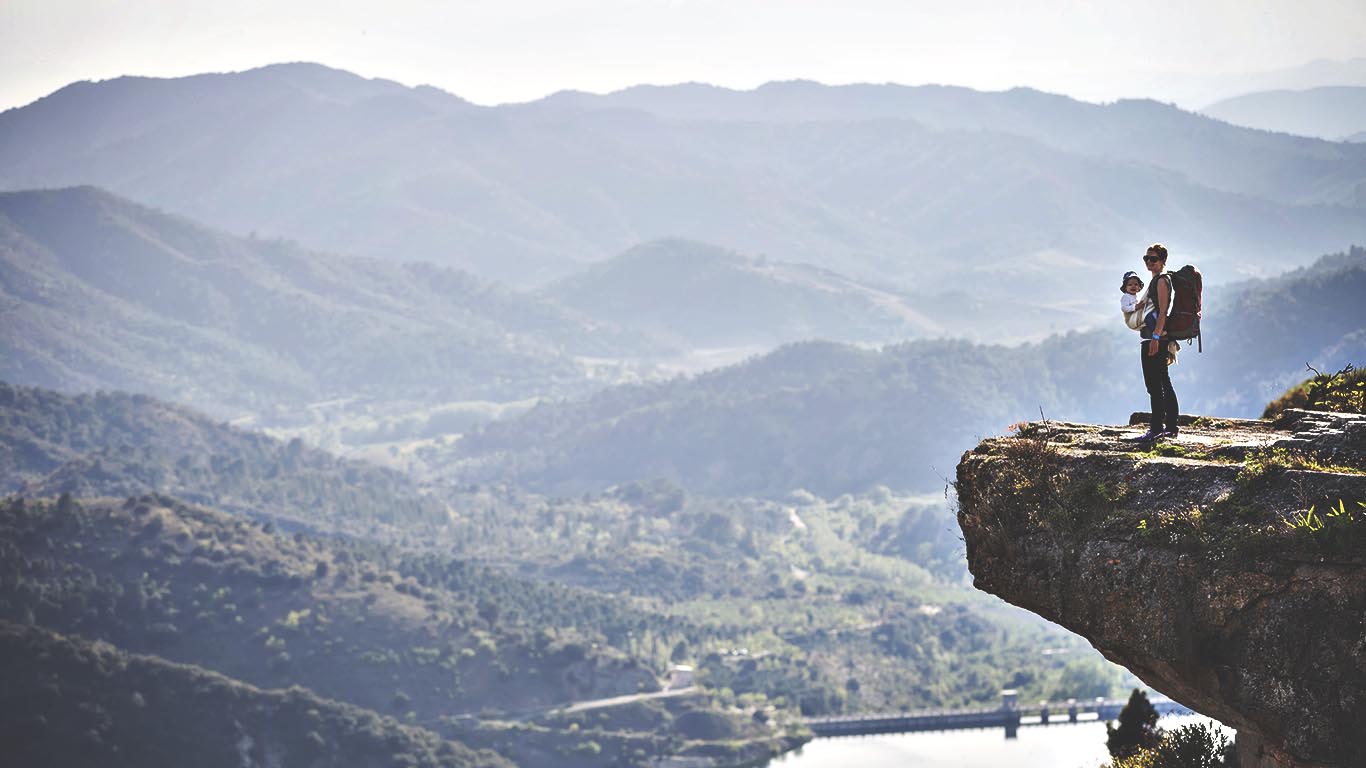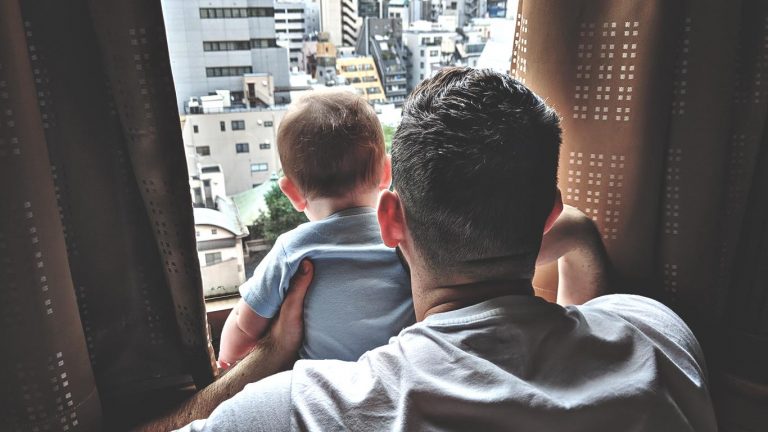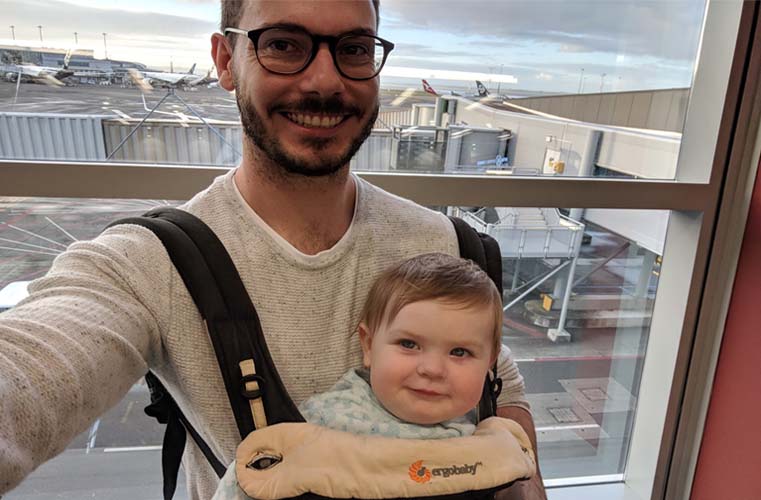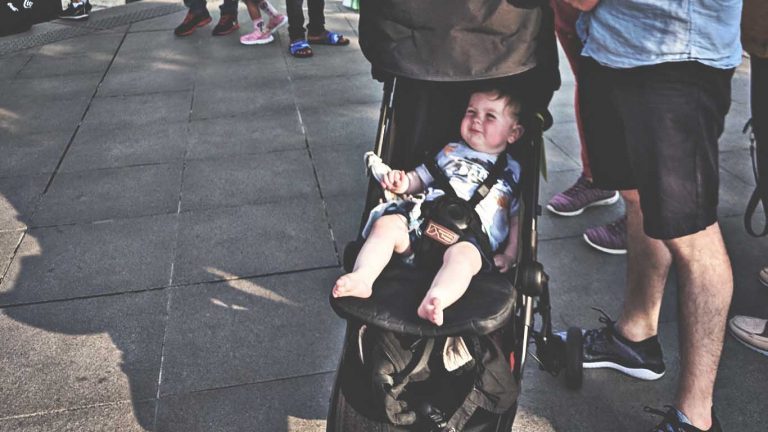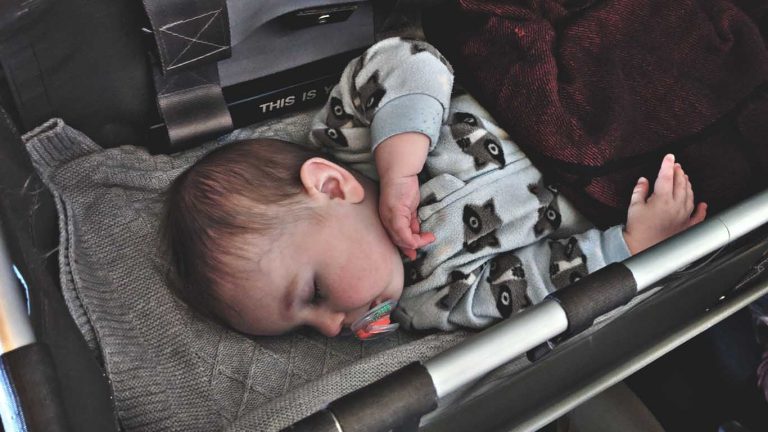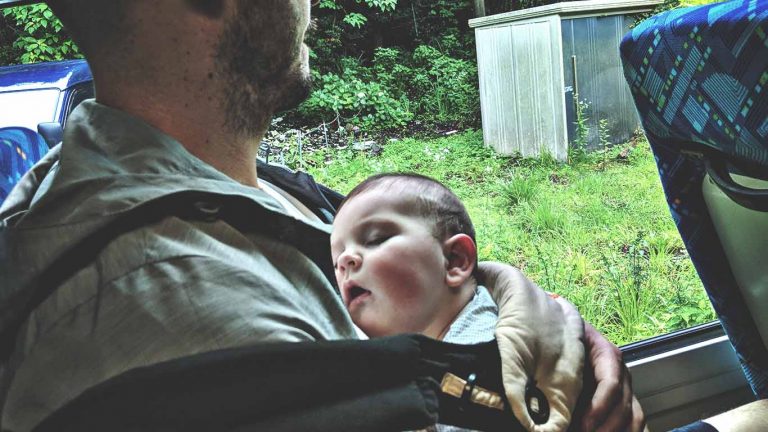Hiking is a great family activity when you’re on vacation. It’s fun to explore new places and to see nature up close, especially if you are in a different country.
However, hiking with your baby can be rather intimidating, especially for new parents.
With the right gear and attitude, you can still go on hikes with your baby and start to build a love for the outdoors early on.
Why you should hike with your baby
Hiking is a great activity for the whole family because it combines exercise and nature. Many mums deal with a some form of hormone-induced depression after having a baby, so being outside for a time, walking with your baby, and enjoying the sunshine and fresh air can offer a natural energy booster.
Studies have shown that babies benefit from exposure to nature and lead to early language development and healthy sleep. Even without the studies, babies like nature – they can take in the trees and sky, the sounds of birds and leaves waving in the wind, the sharp smells of pine or honeysuckle. Hikes are an immersive experience in nature.
Check online or talk to other parents to find trails that are suitable for young kids and baby carrying. It’s also super beneficial to give the park department in the area a call for more information. People who work for state and national parks are often super excited to share their knowledge with families.
Here are some other tips that we’ve found to be helpful in hiking with your baby.
1. Be realistic with your hike choices
Lower your expectations of what you can accomplish in a couple of hours. Face the fact that your first hike is probably going to be more of a nature walk.
If you are carrying your baby, you will want to pick trails where you’ll be able to keep your balance. If you have a toddler walking with you, you’ll need to pick a trail that offers the right distance for the youngest pair of legs.
Kids tire out easily, so plan on taking a lot of rest breaks. Take plenty of water and some easy to carry snacks.
2. Use a baby carrier
Baby carriers are my favorite mode of baby transport.
This is especially true when we’re hiking.
Just be aware that babies need to stay in the front of you until they are about six months old, and then after this you can transition them to a backpack style.
Whoever is wearing the baby carrier needs to make sure it has been adjusted to fit them properly.
3. Pack the right supplies
Having the right gear on hand always helps when traveling with your baby. When hiking it’s a matter of life and death.
The type of gear you need will depend on the type of hike you’re doing, and the type of weather you’re going to be hiking in.
Here are some good general hiking gear tips:
- The Right Clothing – Every hiker needs good, closed-toed shoes, longer socks, a lightweight long-sleeve shirt, long pants, and a hat. Make sure your baby has breathable clothing that covers as much as possible, along with a wide brimmed hat.
- Food and Water – if your baby is bottle fed, bring their bottlers in an insulated bag. Every hiker will need a bottle of water to stay hydrated and some convenient snacks. A collapsible, insulated cooler is a great way to keep your snacks and drinks cool.Whenever you’re hiking or exploring in nature parks remember to take your trash with you! Teach the kids early on about “leave no trace.”
- Blanket – A lightweight blanket or sheet would be good for taking rest breaks.
- First Aid Kit – You can make a first aid kit on your own from home supplies, or you can buy one.
- Navigation Tools – Make sure you have a fully charged GPS system, a compass, and a printed map. You might also pack a portable charger just in case.
- Sun Protection – You get most of your protection from the clothes you choose. Pack sunscreen to re-apply on breaks as needed, and consider sunglasses for everyone as well. Be careful to use small amounts of sunscreen on your baby and rely more on clothes and the hat to protect from the sun.
- Bug Repellent – When choosing a bug repellant, be sure to purchase something designed for children. You want to avoid too much DEET as it is linked to health problems (nothing more than 30 percent). Avoid spraying around the face and eyes. With my kids, I always spray bug spray directly on their hat before they wear it. This keeps the flying gnats and bugs away from their eyes and necks, but it keeps the bug spray off of their skin.
- Extra Gear – Having a multi-tool around is always a good idea, something that has a knife, some pliers, scissors, etc. If nothing else, have a small roll of duct tape handy. I’ve had perfectly good shoes break, bottles start to leak, and bag handles inexplicably snap, and duct tape is a quick fix to have handy. A whistle is a good idea for an emergency as well.
4. Leave early
Babies and toddlers will get tired on your hike, so the best time for your hike is in the morning when they have the most energy.
If you plan on hitting the trail mid-morning, then you can hike, rest and snack, hike some more, and be done in time to head back for lunch and naps. That’s an ideal morning for little ones; they are tired enough for a good nap but not overtired.
The key to hiking with babies and toddlers is knowing when to leave. Designate a turn around time before you start the hike, so that you don’t accidentally push yourself. If you can’t make a loop on your hike, then know when to turn around.
5. Bring a change of clothes
Always have an extra set of clothes for your smallest kids. You never know when baby is going to have a blowout or when your fully potty-trained toddler decides to no longer be potty-trained.
Have extra diapers and wipes as well.
6. Think about the weather
Be sure to check the weather before you leave, and if possible, see if you can find out how a trail might change in the event of rain.
If you are carrying your baby, you will want to avoid hikes with unstable footing, especially if it might rain.
7. Don’t skip important naps
Routine is key for happy babies and toddlers, so you don’t want to skip out on naps. If your baby is still at an age where she can sleep anywhere, then you could schedule your hike around nap time to get exercise for you and sleep for your baby. Little ones love to sleep in motion.
If you have an older baby or toddler that cannot sleep on the move, then schedule your hike to coincide with a good afternoon nap after you finish.
8. Make the hike fun for everyone
Hiking with kids is especially fun because everything is amazing at this age. They love finding bugs, pretty leaves, cool rocks, and sticks. Their natural curiosity will kick in.
Take the time to stop and look when they show an interest in something. Point out bird’s nests, moss, mushrooms, and animal tracks along the way.
Little language learners will love learning all the new words that they see, “tree, rock, bug, water, and leaf.” Learn the names of some local trees and flowers to talk about on your hike. Sing and play games like “I Spy” to pass the time.
To sum it up
Do you enjoy hiking when you are traveling? Have you been an adventurer in the past and are wanting to know if having a baby will change that?
The straight answer is: Absolutely! Life is different after having a baby. But the good news is that you are an adventurous parent. Share your adventures with your kids. It might be slower-paced, but it will be just as magical.
If you want to get some hikes in and you live in the USA check out this guide to top 10 family-friendly hikes in U.S. parks.
Would you add anything to the list for parents who want to hike with their baby? Share those thoughts in the comments below.
